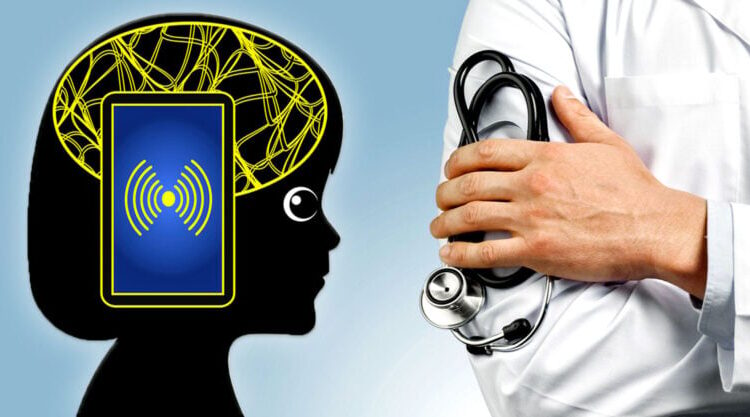The NTP was formed in the 1980’s to monitor cellphone radiation impacts on humans
by Frederick Sinclair, graphic and content extracted from the Defender article by Suzanne Burdick Ph.D
The National Toxicology Program (NTP) has no plans to further study the effects of cellphone radiofrequency radiation (RFR) on human health — even though the program’s own $30 million study that took about 10 years to complete, in 2018 reported evidence of cancer and DNA damage.
The The NTP said in a recently released fact sheet that it was abandoning further investigation because “the research was technically challenging and more resource-intensive than expected.”
According to Devra Davis, Ph.D.,MPH, a toxicologist and epidemiologist, who served on the board of scientific counselors for the NTP when it was launched in the 1980s, “It is the ultimate arrogance and folly to stop doing research on this major growing environmental pollutant, precisely when we have ample evidence of harm.” Davis depicts it as a NTP “variation of ‘don’t ask don’t tell.’ if you don’t want to know whether cell phone radiation is having a biological impact, stop doing the research.”
In January 2023 Davis and her colleagues published a review of more than 200 studies that link wireless radiation to negative biological effects including oxidative stress and DNA damage, cardiomyopathy, carcinogenicity, sperm damage, memory damage and other neurological effects. The US government is being called out for failing to insure that wireless radiation is safe. As of early last year, the NTP was still conducting RFR research. An earlier NTP fact sheet announced that scientists had “overcome several technical issues” and developed a better system for exposing animals to RFR for their studies and researchers were “now making progress” on four research goals:
- Determining the impact of RFR exposure on behavior and stress.
- Conducting physiological monitoring, including evaluation of heart rate.
- Investigating whether RFR induces heating.
- Further evaluating whether RFR exposure causes DNA damage.
In its January 2024 fact sheet, the NTP also reported that the researchers had “tested the new exposure system using in vivo rodent studies” and that their research was “complete.” The NTP did not however say whether the researchers had achieved those four research goals and when asked by The Defender, about the discrepancy and discontinuation of the RFR research, the NTP had not responded. Researchers continue to say there is reason for concern. Infertility clinics are asking men about their wireless devices and cellphone habits: “They tell them to take these phones off their bodies and out of their pockets because there is evidence … where the greater the exposure, the lower the sperm count is, and the poorer the sperm quality. This has been repeatedly shown in studies with human sperm done under controlled conditions, as well as cross-sectional studies.” Dr Davis added, “whether the government stops doing the research or not, there is a massive study underway because we have billions of people being exposed to ever-increasing levels of wireless radiation throughout the world. Millions of American children are exposed every day in classrooms.”
To date, more than 250 scientists — who together have published more than 2,000 papers and letters on the biologic and health effects of non-ionizing electromagnetic fields (EMFs) produced by wireless devices, including cellphones — signed the International EMF Scientist Appeal, which calls for health warnings and stronger exposure limits.






